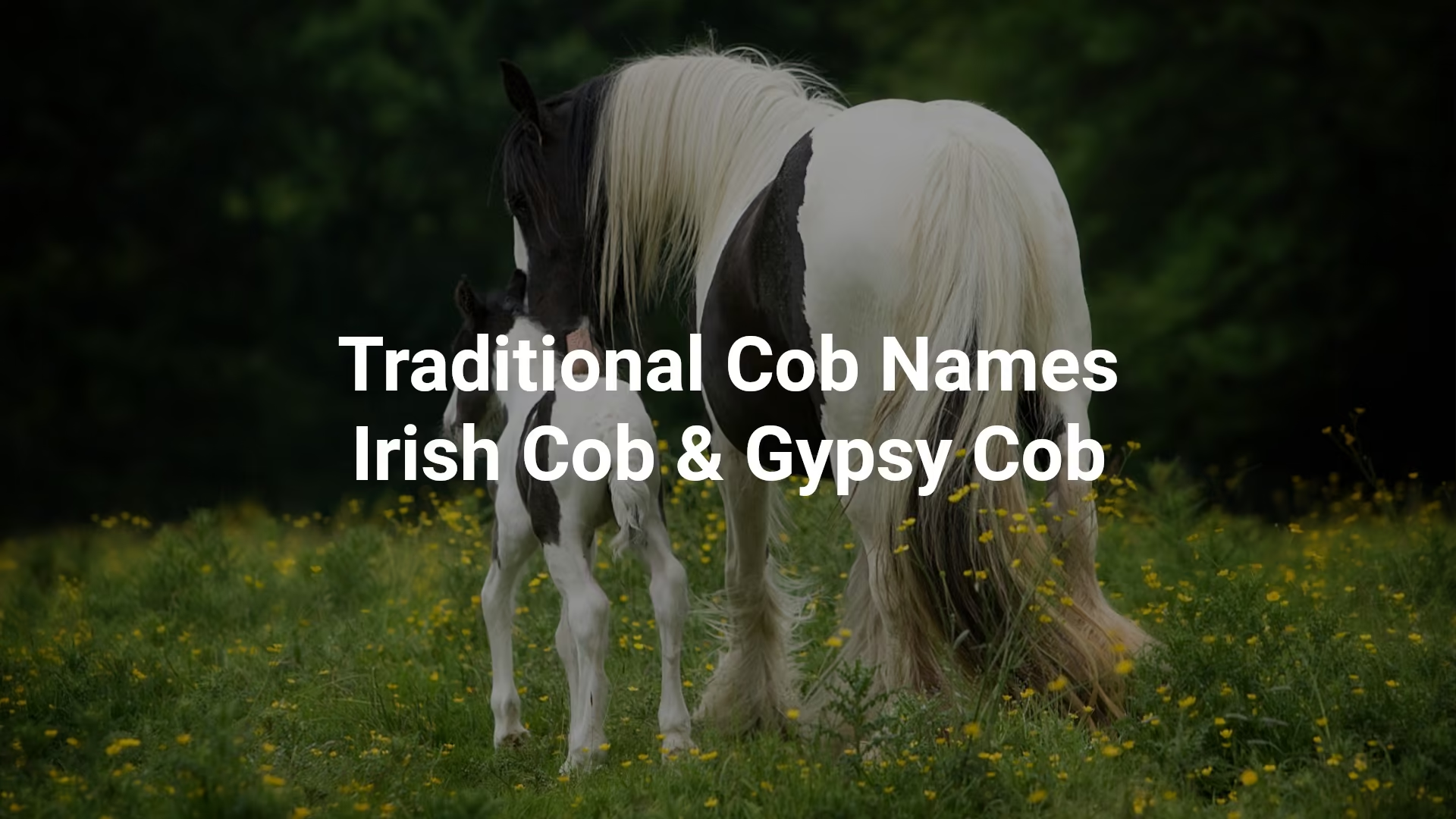
Traditional Cob Names - Irish Cob & Gypsy Cob
Published: Tuesday, 2nd April 2024
The Irish Cob is the Traditional Cob that was first bred in Ireland from the Irish-born breed foundation stallions Sonny Mays, The Lion King, The Road Sweeper, The Coal Horse, The Sham, The Lob, Old Henry and The Checkity Horse. Because Ireland is therefore the true country of origin and the Traditional Cob breed, all Traditional Cobs outside Ireland are either Traditional Cobs from Ireland or the descendants of Traditional Cobs from Ireland. Because the Traditional Cob originated in Ireland the Traditional Cob was given the name Irish Cob in Ireland and, in 1998 the Irish Cob was officially recognised in Ireland as a native Irish breed. When the first (mother) Irish Cob studbook was officially founded in Ireland in 1998 the Irish Cob Breed Standard (the original breed standard for the Traditional Cob set down in Ireland) was also officially recognised in Ireland.
In 2005 an independent registry in England changed the name of the Traditional Cob (Irish Cob) in England to the Traditional Gypsy Cob (aka Gypsy Cob). And, even though the studbook of origin of the Traditional Cob breed (The Irish Cob Studbook) had already been officially founded in Ireland in 1998, because of the name change of the Traditional Cob (Irish Cob) in England to the Traditional Gypsy Cob (aka the Gypsy Cob), in 2012 the independent registry in England gave up its independence to officially found a second (not original) studbook of origin in England for the Traditional Cob breed (The Traditional Gypsy Cob studbook) with a second (not original) breed standard. The reason a second studbook of origin for the Traditional Cob (The Traditional Gypsy Cob Studbook) was officially founded in England is that it is claimed in England that the Traditional Cob was originally bred in England by Gypsies, which is why the Traditional Cob (Irish Cob) was renamed the Traditional Gypsy Cob (aka Gypsy Cob) in England. However, the reason the first (original) studbook of origin for the Traditional Cob (The Irish Cob Studbook) was officially founded in Ireland in 1998 is that the Traditional Cob breed originated in Ireland from Irish-born breed foundation stallions Sonny Mays, The Lion King, The Road Sweeper, The Coal Horse, The Sham, The Lob, Old Henry and The Checkity Horse.
Since the studbook of the origin for the Traditional Cob (The Irish Cob Studbook) was officially founded in Ireland in 1998 the breed has been changing due to English breeding influences. As a result, there are now two types of Traditional Gypsy Cob. One type is an Irish Traditional Cob (which is the Irish Cob) and the other type is an English Traditional Cob (which is the Irish Cob with obvious Welsh Cob characteristics). However, although the Traditional Gypsy Cob is also called the Gypsy Cob, the actual Gypsy Cob that evolved in England from the Irish Cob can be quite different to the more athletically built all-purpose (ride and drive) Irish Cob.
The Gypsy Cob can be smaller, shorter-legged, stockier and stouter-bodied than the Irish Cob. The Gypsy Cob not only can have a broader and more substantial chest and shoulders than the Irish Cob, but the Gypsy Cob can also have rounder, flatter and broader withers that can be set further back than the Irish Cob.
- The Gypsy Cob can also not only have a shorter back than the Irish Cob, but the Gypsy Cob can also have a back that can have a steeper slope upward from the withers to the croup than the Irish Cob.
- The Gypsy Cob croup can be shorter than the croup of the Irish Cob and can have a steeper slope to the tail than the Irish Cob.
- The Gypsy Cob can also have a 'sweeter' and more 'ponyish' head (often described as a 'Bambi head') and smaller ears than the Irish Cob.

The Traditional Cob Registry
The worldwide registration platform for Irish Cobs and Gypsy Cobs.